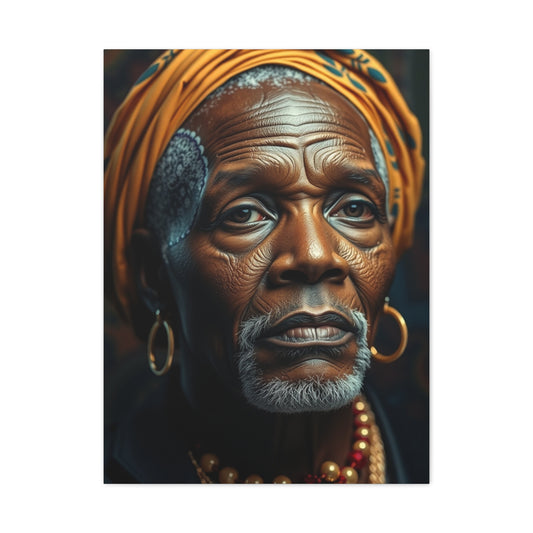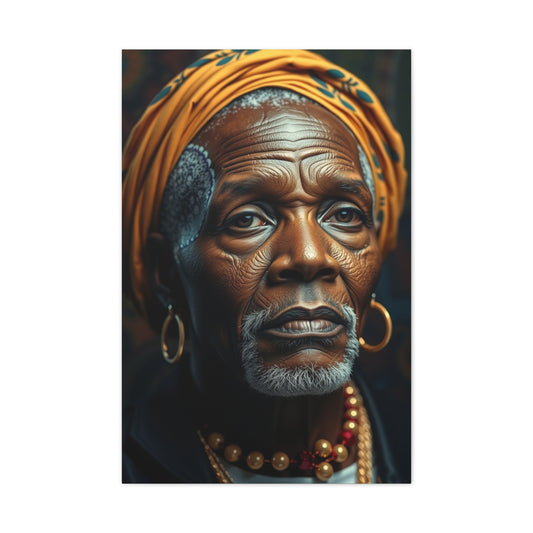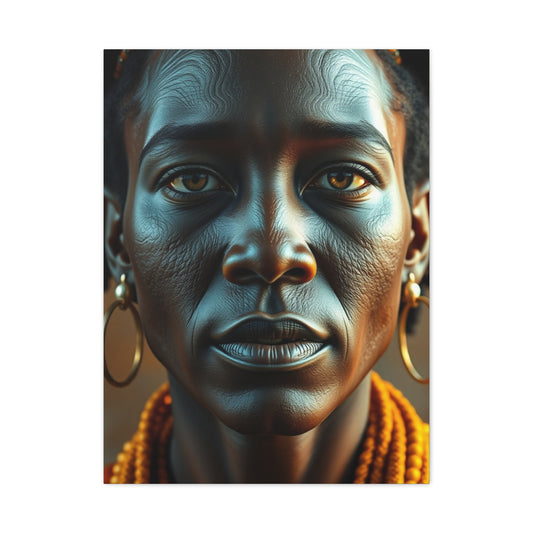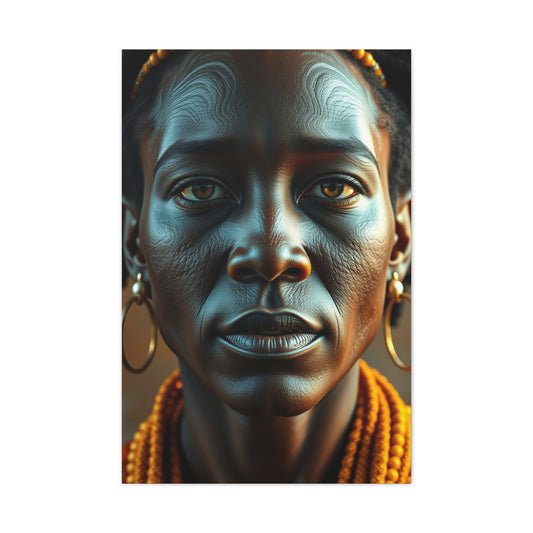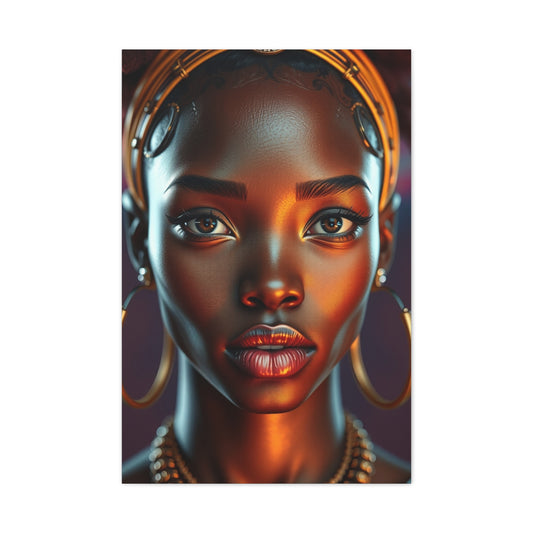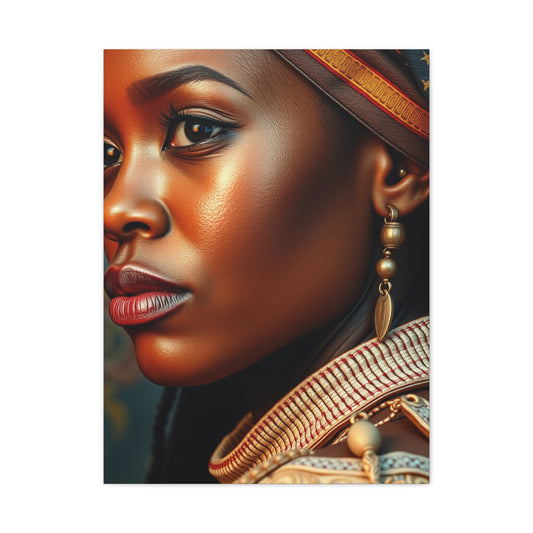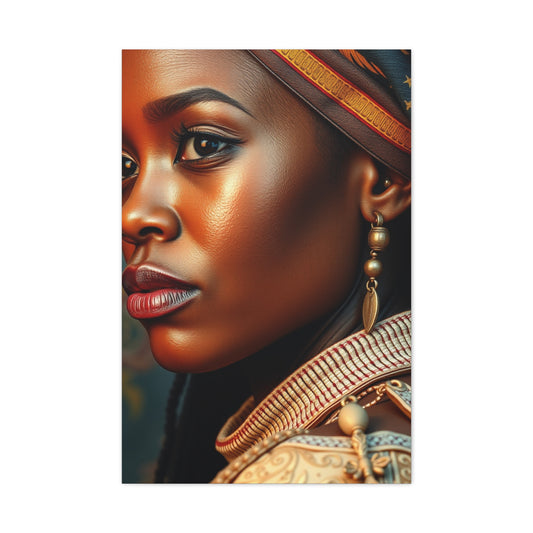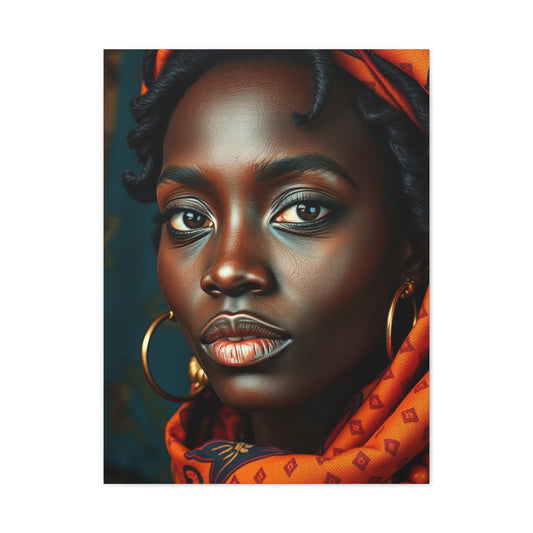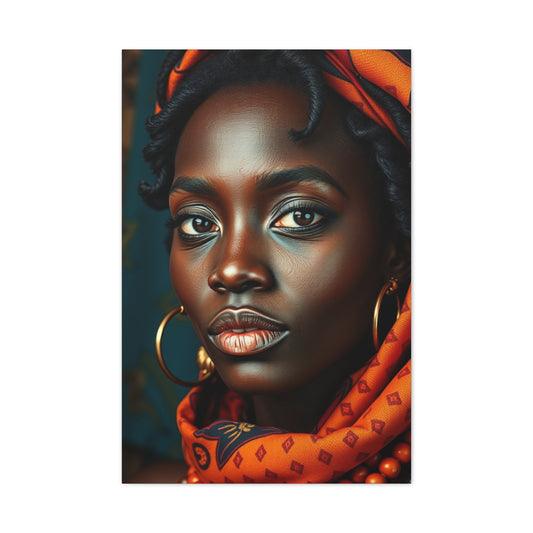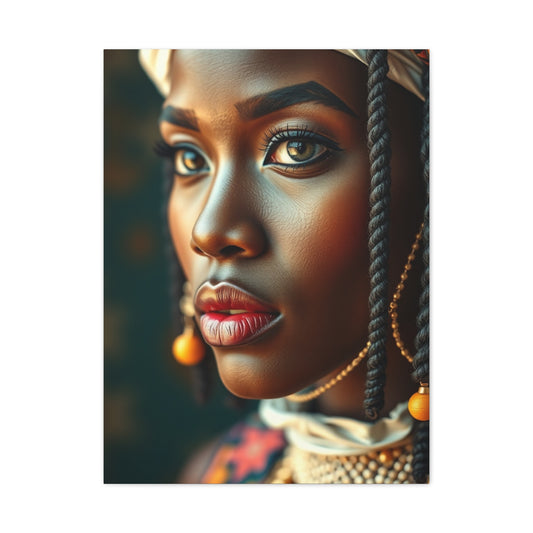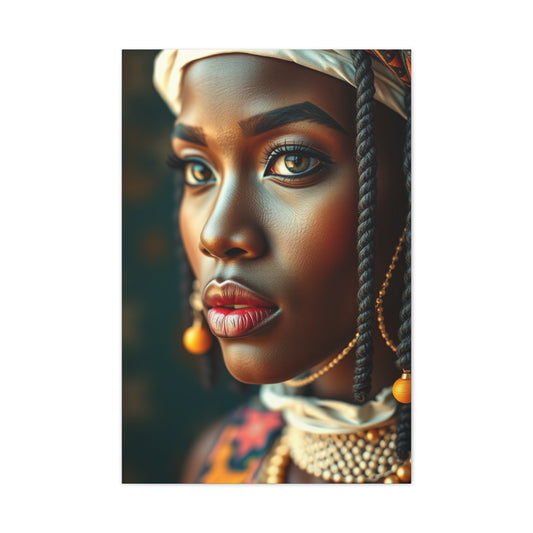Upholstery is an essential element of home interiors, providing comfort, style, and functionality to furniture pieces such as sofas, armchairs, ottomans, and benches. More than just fabric, upholstery encompasses the combination of padding, springs, webbing, and the textile itself that together create the tactile and visual experience of furniture. Selecting the right upholstery fabric can dramatically transform a room’s ambiance, offering a refreshed look without the need to replace the furniture entirely. Understanding the types of fabrics, their characteristics, durability, and care requirements is crucial for making informed decisions that enhance both the aesthetic appeal and usability of your home.
Upholstery fabrics are primarily divided into two categories: natural and synthetic. Natural upholstery fabrics are derived from organic sources such as plants or animals. They are prized for their premium texture, elegance, and often luxurious feel. Common examples include cotton, linen, wool, silk, and leather. Cotton and cotton blends offer comfort and softness, making them ideal for everyday furniture. Cotton is breathable and adaptable to different colorings and patterns, from subtle neutrals to vibrant prints, making it versatile for various design themes. Cotton blends, which mix natural fibers with synthetic elements, improve durability while maintaining the softness and appeal of the natural fabric.
Linen is another popular natural option known for its airy texture and understated elegance. Its natural luster and light-reflective properties make it suitable for bright, open spaces. Linen is highly durable but prone to wrinkling, so it works best in formal spaces or with careful maintenance. Wool, often used for its warmth and resilience, adds texture and a sense of luxury to furniture. It is particularly well-suited to cooler climates or rooms where tactile comfort is important. Silk, while providing unmatched sophistication and smoothness, requires delicate care and is better suited for low-traffic areas. Leather, a timeless choice, combines durability with elegance. It is easy to clean, resistant to stains, and develops a beautiful patina over time, though it can be expensive and sensitive to direct sunlight and extreme humidity. Each natural fabric brings its own personality, texture, and maintenance requirements, influencing the choice depending on the household’s lifestyle and climate conditions.
Synthetic upholstery fabrics are man-made materials created using chemical processes. They are typically more affordable than natural fabrics and often exhibit superior resistance to stains, fading, and wear. Examples include polyester, nylon, acrylic, rayon, and synthetic velvet. Polyester is one of the most versatile synthetic options, providing durability, ease of maintenance, and resistance to stretching and shrinking. It is suitable for high-traffic furniture in living rooms or family spaces where durability and ease of cleaning are essential. Nylon is another robust option, known for its elasticity, abrasion resistance, and ability to retain color over time. Synthetic blends often combine the best qualities of multiple fibers, allowing homeowners to enjoy the look and feel of natural materials with enhanced resilience and practicality.
When choosing upholstery fabric, several factors must be considered to ensure that the furniture not only looks good but also withstands daily use. The location of the furniture and its expected frequency of use are critical. For high-traffic areas such as living rooms or family rooms, tightly woven fabrics with strong durability, such as microfiber or leather, are ideal. These materials resist wear and tear, stains, and fading, making them practical for spaces where furniture is used daily. In contrast, bedrooms or guest rooms experience lower footfall and can accommodate more delicate fabrics such as linen or silk, which require careful maintenance but add elegance and sophistication to the interior. Assessing usage patterns ensures that the upholstery remains functional and aesthetically pleasing over time.
Environmental conditions also play a significant role in selecting upholstery fabric. Homes in humid climates benefit from mildew-resistant fabrics, while areas exposed to direct sunlight require fade-resistant materials. Pet owners should avoid delicate fabrics that are prone to scratching or tearing, instead opting for synthetics that are resilient and easy to clean. Families with allergies may choose hypoallergenic fabrics such as microfiber, which resist dust and allergens. By aligning the fabric choice with the home environment and household members’ needs, homeowners can prolong the life of their furniture while maintaining a healthy and comfortable living space.
The visual appeal of upholstery is just as important as functionality. Patterns, textures, and colors influence the overall look and mood of a room. Traditional patterns such as florals or damasks add a classic charm, geometric patterns convey modernity, and woven textures like tweeds lend a sophisticated formal feel. The scale of the pattern should correspond to the furniture size and room dimensions. Large, bold prints work best in spacious rooms with oversized furniture, whereas subtle patterns are more suitable for compact spaces or small-scale furniture. Texture can also add depth and tactile interest, from smooth silks and leather to nubby tweeds and velvets. Thoughtful selection of patterns and textures ensures the furniture integrates seamlessly into the room’s design while providing visual interest.
Color is another crucial consideration. Light shades such as creams, pastels, or soft neutrals can make small rooms appear larger and more open. Bold colors, on the other hand, add drama and presence to large spaces. Neutral tones offer timeless appeal and flexibility, allowing homeowners to update room decor without needing to replace the upholstery. When selecting colors, it is important to balance aesthetic goals with practical considerations such as the likelihood of stains and maintenance requirements. In homes with children or pets, darker or patterned fabrics can help conceal everyday wear and tear while maintaining a stylish look.
Maintenance and cleaning are integral to preserving upholstery fabric. Natural fabrics like cotton and cotton blends benefit from regular vacuuming and occasional surface cleaning. They may also require protective sprays to prevent staining. Leather requires minimal upkeep, typically involving gentle wiping and periodic conditioning to maintain softness and prevent cracking. Linen and silk are delicate, often necessitating professional cleaning to avoid damage, while wool requires spot cleaning for minor stains and professional care for deep cleaning. Synthetic fabrics generally offer easier maintenance, being more resistant to stains, fading, and stretching. Understanding the cleaning requirements of each fabric type ensures that furniture remains attractive and functional for years, avoiding premature wear or discoloration.
Durability is another factor to weigh carefully. Tightly woven fabrics, high thread counts, and durable fibers ensure that upholstery withstands daily use and maintains its appearance over time. The weight and density of the fabric influence its resistance to sagging, pilling, and tearing. For frequently used furniture, such as sofas in a family room, durability is critical. High-traffic spaces benefit from fabrics like microfiber, leather, or heavy-duty synthetics, while decorative or occasional furniture can embrace more delicate materials. By assessing the durability alongside aesthetic preferences, homeowners can make informed choices that meet both functional and design objectives.
Beyond these considerations, multi-functional furniture and modular setups often demand specific fabric properties. Stretchable fabrics may be necessary for slipcovers or modular seating, while stain-resistant or waterproof fabrics are beneficial for areas prone to spills or accidents. Homeowners may also consider fabrics with UV resistance for rooms with large windows or direct sunlight exposure. Attention to these nuanced requirements ensures that the selected upholstery fabric not only meets current needs but also adapts to lifestyle changes over time.
Ultimately, selecting upholstery fabric is about balancing beauty, comfort, practicality, and durability. A well-chosen fabric enhances the visual appeal of furniture, complements the room’s decor, and ensures long-term functionality. It allows homeowners to express personal style while providing furniture that withstands the demands of everyday living. Intelligent choices in upholstery fabric transform ordinary furniture into standout pieces that elevate the overall interior design of a home.
A comprehensive understanding of upholstery fabrics empowers homeowners to make decisions that suit their lifestyle, room function, and aesthetic goals. By carefully evaluating natural versus synthetic materials, durability, patterns, colors, and cleaning requirements, one can create interiors that are both practical and visually appealing. Every upholstered piece becomes an investment in comfort, style, and longevity, demonstrating that thoughtful selection and maintenance of fabric can turn furniture into a statement of elegance and functionality.
Incorporating these considerations ensures that the furniture in any space serves its purpose while enhancing the overall interior design. From everyday sofas to elegant accent chairs, choosing the right upholstery fabric transforms a room and defines its character. With attention to quality, style, maintenance, and environmental suitability, homeowners can create interiors that are both inviting and enduring, ensuring that their furniture remains a source of comfort, beauty, and pride for years to come.
Choosing the Right Upholstery Fabric for Different Furniture Pieces and Spaces
Selecting the appropriate upholstery fabric is a nuanced process that goes beyond simply picking a color or pattern that appeals to the eye. Each furniture piece, depending on its function and placement, requires a fabric that balances style, durability, and practicality. Sofas, armchairs, ottomans, dining chairs, and benches all experience different levels of use, which directly influences the type of fabric that should be selected. Understanding these requirements ensures that the furniture remains both functional and visually appealing over time, while also complementing the room’s overall interior design.
High-traffic furniture, such as living room sofas and lounge chairs, requires fabrics that can withstand frequent use without showing signs of wear and tear. Durable materials such as microfiber, heavy-duty polyester, or leather are ideal for these spaces. Microfiber, for example, is known for its softness, stain resistance, and easy maintenance, making it a practical choice for family rooms and areas where spills or pet interaction are likely. Leather, though more expensive, provides a sophisticated and timeless look, along with excellent durability. It resists stains, can be wiped clean easily, and develops a unique patina over time that enhances its character. When selecting fabric for high-use furniture, it’s essential to consider the weave, thread count, and overall strength to ensure longevity.
Moderate-use furniture, such as occasional chairs, ottomans, or dining chairs, can accommodate fabrics that are slightly less durable but offer more design flexibility. Cotton blends, linens, and velvet fabrics are suitable options. Cotton blends combine softness with resilience and are available in a wide variety of patterns and textures. Linen provides an airy, sophisticated appearance, perfect for creating a relaxed yet elegant vibe. Velvet, on the other hand, offers a luxurious feel and rich texture, though it requires regular maintenance to prevent flattening of the pile and accumulation of dust. The choice of fabric for moderate-use furniture allows homeowners to introduce intricate patterns, bold colors, or unique textures without compromising functionality.
When considering bedrooms or spaces with lower foot traffic, delicate fabrics such as silk or fine linen can be incorporated. These fabrics are visually stunning and create a luxurious ambiance, making them ideal for accent chairs, headboards, or decorative cushions. Silk, with its smooth finish and subtle sheen, adds an element of sophistication but demands careful cleaning and handling. Linen, while durable, is prone to wrinkling and may require professional cleaning for larger stains. In such spaces, fabric choice is often guided more by aesthetic appeal than by wear resistance, allowing homeowners to experiment with color, pattern, and texture to enhance the room’s design.
Upholstery fabric selection also depends on environmental conditions. Homes in humid regions benefit from fabrics that resist mold and mildew, while areas with high sun exposure require fade-resistant materials to maintain their appearance. Synthetic fabrics such as polyester, acrylic, and blends often perform well in these conditions due to their inherent resistance to environmental stressors. Pet owners should choose fabrics that are scratch-resistant, easy to clean, and capable of repelling pet hair. Microfiber, synthetic velvet, and tightly woven materials are suitable for households with pets, combining durability with comfort and style. Allergy-sensitive households may prefer hypoallergenic fabrics that reduce dust accumulation and minimize potential irritants.
Pattern and texture play a crucial role in upholstery fabric selection. Patterns can enhance a room’s design by introducing visual interest or providing a unifying theme. Geometric patterns lend a contemporary feel, florals bring vibrancy and warmth, and traditional designs add a classic, timeless appeal. Textures, including nubby weaves, velvets, or embroidered fabrics, contribute depth and tactility, making furniture pieces more engaging. The scale of patterns should correspond to the size of the furniture and the room: large, bold patterns suit expansive furniture and spacious rooms, while smaller patterns work best on compact pieces and in smaller areas. Properly balancing pattern and texture ensures the furniture enhances the room rather than overwhelming it.
Color selection is equally important in upholstery fabric choices. Light-colored fabrics such as creams, beiges, or pastels can visually enlarge small spaces and create an airy feel, while darker tones like charcoal, navy, or deep greens provide a cozy and intimate atmosphere in larger rooms. Neutral shades offer versatility, ensuring that furniture remains compatible with evolving interior trends and seasonal decor changes. Bold colors can act as statement pieces, drawing attention to key furniture while maintaining harmony with complementary elements in the room. It is also crucial to consider practical factors such as the likelihood of stains or fading when selecting color, particularly in homes with children or pets.
Cleaning and maintenance requirements significantly impact the choice of upholstery fabric. Microfiber and synthetic blends are generally easy to maintain, often requiring only surface cleaning or vacuuming. Leather can be wiped down and conditioned periodically to maintain softness and prevent cracking. Cotton blends may need occasional professional cleaning, while delicate fabrics like silk, velvet, or fine linen require specialized care to avoid damage or staining. Understanding how each fabric responds to cleaning and wear ensures that furniture remains attractive and functional, reducing the risk of premature deterioration and preserving the home’s aesthetic appeal.
Durability considerations should guide fabric selection for all types of furniture. Tightly woven fabrics, high thread counts, and dense fibers offer superior resistance to abrasion, pilling, and stretching. For high-traffic spaces, investing in durable upholstery ensures longevity and reduces long-term maintenance costs. In contrast, decorative pieces in low-traffic areas may allow for more delicate fabrics, prioritizing visual appeal over ruggedness. Evaluating the balance between durability and aesthetics ensures that furniture not only looks beautiful but also serves its intended function effectively.
Multi-functional furniture, such as storage ottomans or modular seating, presents additional considerations for upholstery fabric. Stretchable fabrics may be required for removable covers or slipcovers, while stain-resistant and waterproof fabrics protect against accidental spills. High-quality synthetic or blended fabrics are particularly useful for these pieces, providing flexibility, ease of maintenance, and longevity. Selecting the right upholstery fabric for multi-functional furniture ensures that these pieces remain practical, stylish, and resilient in everyday use.
Ultimately, choosing upholstery fabric is about balancing aesthetics, functionality, comfort, and maintenance. A well-selected fabric enhances the furniture’s visual appeal, integrates seamlessly with the room’s interior design, and provides durability that meets household needs. Thoughtful fabric selection transforms furniture into a design statement, reflecting personal style while ensuring comfort and usability. By considering factors such as fabric type, durability, pattern, texture, color, maintenance, and environmental suitability, homeowners can make informed choices that elevate the overall interior of their home.
This comprehensive approach to upholstery fabric ensures that furniture remains both practical and visually striking. High-traffic sofas, delicate accent chairs, and versatile multi-functional pieces all benefit from fabrics chosen with careful consideration of use, environment, and aesthetic goals. By understanding the properties of different fabrics and their suitability for various furniture types, homeowners can create cohesive, stylish interiors that are both durable and comfortable. Upholstery fabric selection is not merely a functional decision; it is a design strategy that impacts the look, feel, and longevity of a home’s interior.
Selecting the right upholstery fabric is a critical step in designing and maintaining a home that is both stylish and functional. Upholstery serves as the soft, protective covering for furniture such as sofas, chairs, ottomans, and other seating arrangements. Beyond merely covering furniture, it plays a pivotal role in defining the aesthetic, comfort, and longevity of the piece. Making informed decisions about upholstery fabric requires careful consideration of multiple factors, including furniture usage, environmental conditions, durability, maintenance, color, pattern, and the overall interior design vision. By thoughtfully evaluating these elements, homeowners can ensure that each upholstered piece enhances the home’s visual appeal, supports daily activities, and stands the test of time.
The starting point in choosing upholstery fabric is evaluating the intended use of each furniture piece. Furniture located in high-traffic areas, such as living rooms or family rooms, is subjected to frequent use, making durability a primary consideration. Upholstery in these areas should be made of materials that can withstand daily wear and tear without losing their texture, color, or shape. Fabrics like microfiber, polyester blends, treated cotton, and synthetic leather are particularly suitable for these scenarios because they combine resilience with ease of cleaning. These materials resist pilling, staining, and fading, ensuring that furniture maintains its fresh appearance despite continuous use. In contrast, furniture in lower-traffic areas, such as guest rooms, reading nooks, or formal sitting areas, offers greater flexibility to prioritize aesthetics, pattern, and texture over extreme durability. Luxurious fabrics like velvet, silk, or linen can be used to create a sense of elegance and sophistication, adding visual interest without the constant concern of heavy wear.
Environmental factors in the home also significantly influence upholstery choices. Different fabrics respond variably to sunlight, humidity, and temperature. For instance, homes exposed to intense natural light benefit from fade-resistant fabrics to preserve color and vibrancy over time. Humid climates necessitate materials that resist moisture, mildew, or mold, while dry climates can support fabrics that are more delicate without risk of environmental damage. Pet owners and families with children may prefer fabrics that are stain-resistant and easy to maintain, reducing the risk of damage from spills, scratches, or accidental messes. Understanding these environmental considerations ensures that upholstery not only looks good but also functions effectively under specific household conditions, creating furniture that remains both attractive and practical.
Aesthetic considerations are equally vital in upholstery selection. The choice of color, pattern, and texture directly affects the visual impact of furniture within a room. Light colors can make a small space appear larger and more open, while darker shades provide a sense of intimacy and warmth in larger rooms. Patterns, whether geometric, floral, or abstract, add personality and depth to the furniture, allowing it to either stand out as a statement piece or blend harmoniously with the surrounding décor. Texture plays a dual role: it enhances the tactile experience while contributing to the visual richness of a space. Smooth fabrics like leather or microfiber provide a sleek, polished look, whereas textured fabrics like tweed, boucle, or velvet add layers of warmth and complexity. Coordinating these elements with the room’s color palette, lighting, and other design features ensures that the upholstered furniture complements and elevates the overall interior aesthetic.
Maintenance and longevity are also crucial factors in fabric selection. High-traffic areas benefit from fabrics that are easy to clean and maintain, such as microfiber, polyester blends, or treated cotton. These fabrics can be wiped, vacuumed, or spot-cleaned with minimal effort, maintaining their appearance over time. Leather, while more demanding in terms of conditioning, offers durability and a classic look that improves with age. Natural fabrics like linen or silk, although visually luxurious, often require professional cleaning and careful handling, making them better suited for spaces with moderate use. By understanding the maintenance requirements of different upholstery fabrics, homeowners can select materials that align with their lifestyle and cleaning routines, ensuring that furniture remains attractive and functional over the years.
Durability is closely linked to both usage and maintenance, as it determines how long the furniture can retain its structural and visual integrity. Tightly woven fabrics, high thread counts, and performance-treated materials generally offer greater resistance to wear, making them ideal for sofas, armchairs, or seating that is frequently used. Evaluating durability also involves considering the type of furniture and its purpose; for example, a recliner used daily requires stronger fabric than an accent chair placed in a corner for occasional use. Choosing durable fabrics protects the investment in furniture, reducing the need for frequent replacements while maintaining consistent comfort and visual appeal.
Color coordination and integration with the interior design vision are the final critical considerations in upholstery selection. Upholstery should harmonize with the room’s overall style, complement existing furniture, and reflect the homeowner’s taste. Neutral tones provide timeless versatility, allowing furniture to blend seamlessly with changing décor over time, while bold colors or patterned fabrics can inject personality and create focal points within a room. The choice of upholstery fabric also allows for subtle personalization, enabling homeowners to express their unique style and create spaces that are cohesive, inviting, and visually balanced.
Selecting the right upholstery fabric involves a multi-faceted evaluation of furniture usage, environmental conditions, aesthetics, maintenance, durability, and color coordination. Thoughtful consideration of these factors empowers homeowners to make informed choices that align with their lifestyle, household needs, and design vision. Properly chosen fabrics enhance furniture functionality, prolong its lifespan, and elevate the visual impact of interiors. Each upholstered piece becomes more than just a functional object—it becomes a statement of comfort, style, and sophistication. By integrating durability, practicality, and aesthetic appeal, homeowners can ensure that their furniture contributes meaningfully to the overall character of their home, creating spaces that are beautiful, comfortable, and enduring.
Matching Upholstery Fabric with Interior Design Styles and Themes
Choosing the right upholstery fabric extends beyond durability and maintenance—it plays a pivotal role in defining the style and atmosphere of a room. Every interior design theme has characteristics, textures, and color palettes that interact with upholstery, influencing the overall aesthetic. Whether your home leans toward contemporary minimalism, classic traditional, rustic charm, or eclectic vibrancy, the upholstery fabric should complement and enhance the chosen style, creating cohesion and visual harmony throughout the space. Understanding how fabrics interact with design themes ensures that furniture contributes positively to the room’s character rather than appearing out of place.
For contemporary and modern interiors, clean lines, neutral tones, and minimalistic patterns dominate. Upholstery fabrics for this style often feature smooth textures, understated patterns, and a focus on function as well as form. Materials like microfiber, synthetic blends, or leather work exceptionally well, as they provide durability while maintaining a sleek, polished appearance. Monochromatic color schemes, muted shades, and subtle geometric patterns further reinforce the minimalist aesthetic. For accent pieces, small bursts of color or contrasting textures, such as a velvet chair or a textured throw pillow, can add interest without disrupting the room’s modern flow. By carefully selecting upholstery fabric that aligns with contemporary interiors, homeowners can create spaces that are visually clean, sophisticated, and cohesive.
Traditional interiors, in contrast, embrace ornate detailing, rich colors, and timeless patterns. Upholstery fabrics like silk, brocade, damask, or jacquard are often preferred for traditional furniture, as they provide elegance, depth, and a sense of heritage. Floral prints, paisleys, and intricate motifs contribute to the classic look, while plush textures and heavier fabrics reinforce comfort and luxury. Leather in deep, warm tones also complements traditional settings, offering sophistication and durability. The scale of patterns is essential: larger motifs suit expansive furniture, while smaller motifs are ideal for accent chairs or decorative cushions. Selecting upholstery fabrics that reflect traditional styles ensures that furniture enhances the room’s rich, inviting atmosphere.
Rustic and farmhouse interiors benefit from fabrics that convey warmth, natural textures, and a lived-in charm. Linen, cotton, tweed, and burlap blends are ideal choices, as they evoke authenticity and comfort. Natural, earthy tones like beige, taupe, olive, and muted reds create a cozy environment, while textured fabrics add tactile interest. Upholstery in these interiors often emphasizes durability and practicality, with patterns such as checks, plaids, or subtle stripes reinforcing the rustic aesthetic. Accent furniture can incorporate slightly bolder patterns or colors to provide focal points, but the overall fabric selection should maintain harmony with the natural, organic materials used throughout the space. By aligning fabric choices with rustic interiors, homeowners achieve a warm, inviting, and timeless appeal.
Eclectic and bohemian interiors encourage experimentation with color, pattern, and texture. Upholstery fabrics for these styles often feature vibrant prints, mixed textures, and unconventional combinations that reflect personality and creativity. Fabrics like velvet, embroidered cotton, patterned linens, and even patchwork textiles can coexist harmoniously if color palettes and visual weight are carefully balanced. Bold geometric patterns, ethnic motifs, and bright florals introduce energy and individuality to furniture pieces. In eclectic interiors, the upholstery fabric becomes a statement, enabling homeowners to showcase personal style while maintaining balance within the room’s diverse elements. The key is to ensure that patterns, colors, and textures complement rather than compete, creating a visually stimulating yet cohesive space.
Coastal and nautical-inspired interiors require upholstery fabrics that evoke lightness, airiness, and a connection to nature. Cotton, linen, and light synthetic blends are popular choices, as they are breathable, easy to maintain, and visually fresh. Soft blues, whites, sand tones, and muted pastels reinforce the coastal aesthetic, while subtle stripes or textured weaves provide visual interest. Furniture in coastal interiors benefits from light-colored upholstery, which enhances natural light and reinforces a serene, open atmosphere. Pattern scale should remain subtle to maintain a calm and uncluttered look. Choosing fabrics that align with coastal interiors ensures that furniture contributes to a relaxed, breezy ambiance, making rooms feel inviting and harmonious.
Industrial interiors emphasize raw materials, exposed structures, and a minimalist color palette dominated by greys, blacks, and metallics. Upholstery fabrics suitable for industrial spaces include leather, heavy-duty canvas, and synthetic blends that mirror the durability and aesthetic of the environment. Neutral tones, distressed finishes, and textured materials complement exposed brick, concrete, and metal elements, reinforcing the rugged, utilitarian character of industrial interiors. Upholstered furniture often serves as a contrasting soft element, balancing the hardness of industrial materials while maintaining the room’s bold, functional look. Selecting fabrics that integrate with industrial design ensures a coherent, edgy, and stylish interior that is both functional and visually compelling.
Mid-century modern interiors, characterized by sleek lines, organic forms, and vibrant accents, benefit from upholstery fabrics that are colorful yet restrained, combining durability with elegance. Tweeds, wools, velvets, and synthetic blends in jewel tones or muted earth shades work well with the iconic shapes of mid-century furniture. Simple geometric patterns, bold block colors, and subtle textures enhance the furniture’s sculptural qualities without overwhelming the space. Fabric choices should reinforce the clean lines and functional aesthetic, allowing furniture to stand out as design features while maintaining comfort and usability. Properly selected upholstery ensures that mid-century modern interiors remain stylish, cohesive, and practical.
For eclectic homes where multiple styles intersect, fabric selection requires careful consideration of color harmony, pattern balance, and textural variety. Upholstery fabrics become tools to unify diverse design elements, blending traditional, contemporary, and ethnic pieces into a cohesive whole. Neutral base fabrics with colorful or patterned accents allow flexibility and adaptability, while bold textures introduce tactile interest. Coordinating upholstery with room colors, furniture shapes, and accessories ensures that each piece contributes positively to the overall design narrative. This thoughtful approach creates a dynamic, layered interior where furniture enhances rather than clashes with the surrounding decor.
Ultimately, matching upholstery fabric with interior design styles requires a balance of aesthetic alignment, practicality, and functionality. Fabrics should reflect the character of the room, accommodate usage patterns, and integrate with lighting, color schemes, and furniture shapes. By understanding the interplay between fabric choice and design theme, homeowners can ensure that each furniture piece enhances the room’s identity, comfort, and longevity. Properly selected upholstery becomes an integral part of the design story, reinforcing style while delivering functionality and durability.
By considering interior themes—modern, traditional, rustic, eclectic, coastal, industrial, or mid-century—homeowners can choose upholstery fabrics that enhance both the visual appeal and utility of their furniture. Thoughtful fabric selection allows furniture to complement its surroundings, withstand daily use, and provide comfort while elevating the overall aesthetic of a space. When executed well, the right upholstery fabric harmonizes with interior design, creating a cohesive, inviting, and visually compelling environment that reflects the homeowner’s personality and lifestyle.
Maintenance and Cleaning Tips for Upholstery Fabrics
Maintaining and cleaning upholstery fabrics is a critical aspect of preserving both the appearance and longevity of furniture. Different types of fabrics require different care routines, and understanding these requirements helps homeowners protect their investments while keeping their interiors looking fresh and stylish. Regular maintenance prevents the buildup of dirt, dust, and stains, which can degrade fabric over time and affect the overall aesthetic of a room. It also ensures that furniture remains hygienic, comfortable, and visually appealing for years to come. Proper cleaning techniques vary according to the fabric’s material, weave, and finish, making it essential to approach each type of upholstery with an informed strategy.
For natural fabrics such as cotton and cotton blends, regular vacuuming with an upholstery attachment is essential to remove dust and debris. Surface cleaning with a damp cloth can handle light stains, while more stubborn marks may require mild detergent solutions. It’s important to test any cleaning solution on an inconspicuous area first to prevent discoloration or damage. For cotton fabrics with printed patterns, avoid harsh scrubbing, which can fade colors or distort the weave. Applying a fabric protector after cleaning can also help repel stains and prolong the life of the upholstery, making it easier to maintain a clean and polished look in high-traffic areas.
Linen upholstery requires a gentler approach due to its tendency to wrinkle and soil easily. Regular dusting and vacuuming are recommended, while spot cleaning should be performed immediately to prevent stains from setting. Mild soap solutions and a soft cloth work best for light stains, but larger or more stubborn marks often necessitate professional cleaning. Linen blends with synthetic fibers can offer greater durability and resistance to wrinkling while still retaining the natural texture and elegance of linen. Periodic professional cleaning ensures that linen upholstery maintains its crisp appearance and prevents fiber degradation over time.
Silk upholstery is delicate and luxurious, requiring careful handling to preserve its sheen and texture. Vacuuming with a soft brush attachment removes surface dust, but water or detergent solutions can damage the fibers and cause staining. Professional dry cleaning is typically recommended for silk fabrics, especially for larger furniture pieces. For minor spills, blotting with a clean, dry cloth can prevent the stain from spreading. Silk blends with synthetic fibers are sometimes used to increase durability while maintaining the luxurious look and feel, but even these require careful cleaning and occasional professional maintenance.
Wool upholstery is durable yet requires proper care to maintain its softness and color. Regular vacuuming with a gentle brush attachment removes dust and prevents matting, while spot cleaning with a damp cloth can handle minor stains. For larger spills or heavier soiling, professional cleaning is recommended to preserve the fabric’s texture and prevent shrinkage or felting. Wool blends with synthetic fibers can provide added resistance to wear and stains, making them ideal for high-traffic furniture while retaining the warmth and natural beauty of wool. Using fabric protectors can also enhance durability and simplify maintenance.
Leather upholstery offers both elegance and durability, but it requires routine care to prevent cracking, drying, and discoloration. Regular dusting and wiping with a damp cloth helps maintain its surface, while leather conditioners applied periodically keep the material soft and supple. Avoid harsh chemicals, which can strip the natural oils from the leather and cause damage. For spills, blotting immediately with a clean, dry cloth is essential. Different types of leather, such as full-grain, top-grain, or faux leather, may require specific care instructions, so it’s important to follow manufacturer recommendations to preserve the material’s longevity and appearance.
Microfiber and synthetic fabrics are popular for their ease of maintenance and resistance to stains. Regular vacuuming and occasional surface cleaning with a mild soap solution or upholstery cleaner keep these fabrics looking new. Microfiber, in particular, is highly resistant to water and stains due to its tightly woven fibers, making it ideal for homes with children or pets. Synthetic fabrics like polyester, nylon, or acrylic often feature stain-resistant finishes that simplify cleaning, allowing homeowners to address spills quickly without worrying about long-term damage. Following care labels and manufacturer instructions ensures that these fabrics retain their color, texture, and durability.
Regular rotation of cushions and upholstered sections helps prevent uneven wear and maintains the fabric’s appearance. For removable cushion covers, washing or dry-cleaning according to fabric specifications helps maintain hygiene and color vibrancy. Sunlight exposure should be monitored, as prolonged direct sunlight can fade fabric colors and weaken fibers over time. Using blinds, curtains, or UV-protective window films can mitigate sun damage, preserving both natural and synthetic upholstery fabrics.
Preventive measures, such as using throws or slipcovers, can protect high-traffic furniture from daily wear, spills, and pet interaction. These accessories are removable, washable, and often more cost-effective than professional cleaning, providing an additional layer of protection. For households with young children or pets, investing in stain-resistant fabrics or fabric protectors can significantly reduce maintenance efforts while maintaining a pristine look.
Understanding the cleaning codes on fabric labels is crucial for proper maintenance. These codes indicate the recommended cleaning methods, such as water-based cleaning (W), solvent-based cleaning (S), or professional cleaning only (X). Following these guidelines prevents accidental damage and ensures the longevity of the upholstery. Combining regular vacuuming, spot cleaning, professional maintenance, and preventive measures creates a comprehensive care routine that preserves the beauty, comfort, and durability of upholstered furniture.
Proper upholstery maintenance not only extends the lifespan of furniture but also enhances the overall aesthetics and comfort of a space. Clean, well-maintained fabrics reflect a homeowner’s attention to detail and contribute to a welcoming, sophisticated interior. By understanding the specific needs of different fabrics and implementing consistent care routines, homeowners can ensure that every upholstered piece remains an attractive, functional, and enduring element of their home décor.
Ultimately, regular cleaning, careful handling, and proactive maintenance are key to preserving upholstery fabrics. From natural fibers like cotton, linen, and silk to durable synthetics and luxurious leather, each material requires attention to detail and appropriate care strategies. By combining knowledge of fabric properties with consistent cleaning practices, homeowners can maximize the longevity, beauty, and usability of their furniture, ensuring that it continues to enhance the home environment for years to come.
Choosing Upholstery Fabrics Based on Durability and Usage
When selecting upholstery fabrics for home interiors, durability and intended usage play a pivotal role in ensuring that furniture remains functional and visually appealing over time. Furniture pieces experience different levels of wear depending on their location and purpose, which directly influences the type of fabric suitable for each piece. Considering these factors helps homeowners balance aesthetics, comfort, and longevity, preventing premature wear and tear while maintaining style consistency throughout the home.
High-traffic areas like living rooms, family rooms, and frequently used seating require fabrics that can withstand constant use without showing signs of damage. Synthetic fabrics such as microfiber, polyester blends, and acrylic are highly recommended for these spaces due to their resistance to stains, abrasion, and fading. Microfiber, in particular, is tightly woven, soft to the touch, and incredibly durable, making it ideal for homes with children or pets. Additionally, fabrics treated with stain-resistant finishes add another layer of protection, allowing for easy cleaning of spills and accidental marks, which are inevitable in active household environments.
Leather upholstery is another excellent choice for high-use furniture, combining durability, sophistication, and ease of maintenance. Full-grain and top-grain leather are long-lasting options that develop a natural patina over time, adding character to the furniture while remaining resistant to wear. Faux leather or bonded leather offers a more budget-friendly alternative while still providing a sleek, contemporary look and sufficient durability for moderately used areas. For optimal longevity, leather should be maintained with regular dusting, conditioning, and protection from direct sunlight to prevent cracking or discoloration.
Medium-traffic spaces, such as bedrooms, home offices, or formal living areas, allow for more flexibility in fabric selection. While durability remains important, homeowners can opt for fabrics that offer a balance between elegance and strength. Linen blends, cotton blends, and wool fabrics provide texture, softness, and visual interest, making them suitable for chairs, sofas, or accent pieces in these areas. These fabrics are less prone to heavy abrasion, making them perfect for spaces with occasional use while still offering comfort and aesthetic appeal. Regular vacuuming, gentle cleaning, and occasional professional maintenance help preserve these fabrics, ensuring their longevity.
For low-traffic or decorative furniture, homeowners have more freedom to prioritize visual impact and design over durability. Fabrics like silk, velvet, and brocade provide luxurious texture, vibrant color, and intricate patterns, making them ideal for statement pieces, accent chairs, and decorative ottomans. While these fabrics are visually striking, they require careful handling, minimal exposure to direct sunlight, and specialized cleaning techniques. Using these materials in controlled spaces where they are less likely to face heavy wear allows homeowners to enjoy their opulence without sacrificing longevity.
Pattern and texture also influence durability and perceived wear. Tight weaves, small-scale patterns, and subtle textures generally withstand daily use better than loose weaves, large-scale prints, or heavily textured fabrics, which can snag, fade, or show wear more quickly. Upholstery selection should consider the intended purpose of the furniture: sofas and chairs in family rooms should prioritize durability and resistance to stains, while decorative chairs or accent furniture in formal areas can focus on patterns, textures, and visual appeal.
The scale and color of the fabric affect its practicality and maintenance requirements. Lighter colors may show dirt, stains, and wear more easily, while darker tones tend to hide minor imperfections. Neutral shades are versatile and less likely to clash with changing interior décor, while bolder colors and prints add character to spaces with lighter traffic. Choosing the appropriate color and pattern combination not only enhances the visual appeal but also reduces the frequency of cleaning and upkeep needed for heavily used furniture.
Fabric blends, combining natural and synthetic fibers, offer an effective compromise between aesthetics, durability, and maintenance. For instance, a cotton-polyester blend provides the softness and comfort of natural fibers with the stain resistance and strength of synthetics. These fabrics can withstand moderate to high use while maintaining their texture and appearance. Similarly, blends of wool with synthetic fibers increase resilience and reduce shrinkage, making them suitable for a wide range of furniture types and household conditions.
Another consideration for durability is the type of finishing applied to upholstery fabrics. Protective coatings, stain repellents, and fade-resistant treatments enhance fabric resilience, making it suitable for homes with children, pets, or high sun exposure. Microfiber, performance fabrics, and treated synthetic fabrics are particularly advantageous in such situations, offering easy maintenance and extended longevity without compromising on aesthetics. Homeowners can enjoy the beauty of the fabric while ensuring that it continues to perform well under daily use.
In addition to fabric selection, the construction of the furniture and cushion filling impacts durability. Dense, high-quality foam or down-wrapped cushions maintain their shape and comfort over time, preventing sagging or uneven wear. Combining durable upholstery fabrics with well-constructed furniture frames ensures that pieces remain functional and visually appealing for many years. Properly maintaining cushions, rotating them regularly, and avoiding excessive weight or stress on seating surfaces further enhances the longevity of upholstered furniture.
Choosing the right upholstery fabric is an essential aspect of home interior design that combines aesthetics, functionality, and long-term durability. Furniture is not only a visual element in a room but also a practical tool used daily by members of the household. Each piece experiences varying levels of wear depending on its location, usage frequency, and the lifestyle of the occupants. Thoughtful selection of upholstery fabric based on durability and usage patterns ensures that furniture maintains its appearance, comfort, and functionality over time. Understanding these factors allows homeowners to make informed decisions, balancing style with practical considerations, and ultimately enhancing the overall interior of their home.
The first step in selecting durable upholstery fabrics is to analyze the expected level of wear for each piece of furniture. Living rooms, family rooms, and home offices typically experience higher traffic compared to guest rooms, formal lounges, or seldom-used reading corners. Sofas and chairs in these areas are subject to constant use, exposure to pets or children, and potential spills or stains. Therefore, fabrics chosen for high-traffic furniture must be resilient, easy to clean, and capable of maintaining their texture and color over time. Performance fabrics such as microfiber, treated cotton blends, polyester, and synthetic leather are excellent choices because they offer a balance between comfort and durability. These fabrics resist pilling, fading, and abrasion, which helps maintain the furniture’s visual appeal even under heavy usage.
In addition to wear frequency, the function of the furniture influences fabric choice. For example, a sofa that serves as the primary seating area for a family will require upholstery that can endure daily use while remaining comfortable. In contrast, decorative chairs or accent seating may prioritize texture, pattern, or color, allowing homeowners to choose luxurious or intricate fabrics that elevate the room’s style without compromising on usability. Armchairs in a reading nook, for instance, can feature velvet or linen upholstery, as they experience moderate use and provide a tactile, inviting experience. Conversely, fabrics in heavily used dining chairs or study chairs should focus on easy maintenance and stain resistance, ensuring long-term functionality.
Environmental factors within the home also impact the choice of upholstery fabrics. Homes in humid climates benefit from mildew-resistant fabrics to prevent damage and odor accumulation, whereas bright, sunny rooms require fade-resistant materials to maintain color integrity over time. Similarly, households with children or pets may prioritize fabrics that are easy to clean, stain-resistant, and durable enough to withstand scratching or rough use. Materials like microfiber, treated cotton, or synthetic blends provide excellent solutions for such environments, combining practical resilience with aesthetic appeal. By evaluating the household’s lifestyle and environmental factors, homeowners can select fabrics that not only withstand wear and tear but also maintain the desired look and feel of their interiors.
Visual appeal is a critical component of fabric selection, even when durability is a primary concern. High-traffic areas do not need to compromise on style. Fabrics can be chosen with patterns, textures, and colors that hide minor stains or signs of wear while complementing the overall interior design. For instance, woven textures or subtle geometric patterns can mask everyday marks and maintain a polished appearance. Similarly, darker or neutral tones are less prone to showing dirt and can provide a timeless, versatile backdrop for decorative accents like cushions or throws. Strategic choices in color and pattern ensure that furniture remains attractive and inviting, even with regular use.
The combination of durability and fabric maintenance plays a vital role in long-term satisfaction. Certain fabrics require minimal upkeep, making them ideal for busy households. Microfiber and synthetic blends can be wiped clean or vacuumed easily, while treated cottons and performance fabrics often resist staining and pilling. Leather or faux leather upholstery, while requiring periodic conditioning, provides durability, ease of cleaning, and a sleek visual appearance. In comparison, natural fabrics like silk or linen, though visually luxurious, require careful handling and are better suited for low-traffic or decorative pieces. By aligning fabric care requirements with the expected use of the furniture, homeowners ensure that maintenance does not become burdensome while preserving the furniture’s aesthetic and structural integrity.
Balancing all these factors—usage, durability, maintenance, environmental conditions, and visual appeal—ensures that furniture serves both practical and stylistic purposes effectively. High-traffic areas are protected with resilient, easy-to-maintain fabrics, while decorative pieces in lower-use spaces can embrace luxurious textures, bold patterns, or intricate weaves. This approach ensures a cohesive design strategy across the home, where each furniture piece is chosen not only for its aesthetic contribution but also for its suitability to the space and lifestyle needs.
Incorporating fabric selection into overall interior design allows homeowners to create a harmonious environment. Thoughtful choices in upholstery reflect the function and personality of each space while maintaining a consistent design language throughout the home. Durable fabrics in primary living areas prevent premature wear and allow furniture to retain its beauty and comfort over time, while more delicate or stylistically distinctive fabrics in secondary spaces enhance the overall visual experience without compromising practicality. This balance between durability and aesthetics ensures that furniture remains a long-term investment, providing both functionality and style for years to come.
Ultimately, analyzing furniture usage patterns, understanding household needs, and considering environmental factors are fundamental to choosing upholstery fabrics wisely. By carefully matching fabric durability to the intended function of each piece, homeowners create interiors that are practical, visually appealing, and resilient. Thoughtful fabric selection transforms furniture from a simple utilitarian element into an enduring design asset, enhancing comfort, style, and longevity. Proper planning and informed decisions in upholstery ensure that every piece not only complements the home’s décor but also withstands the demands of daily life, providing lasting value and elevating the overall interior experience.
Matching Upholstery Fabrics with Home Interiors
Choosing the right upholstery fabric goes beyond durability and comfort; it plays a significant role in shaping the aesthetic and ambiance of a home. Upholstery should harmonize with the overall interior design, reflecting the style, mood, and personality of the space while complementing other elements such as flooring, wall color, lighting, and accessories. A well-chosen fabric can transform furniture into a focal point, enhance the room’s cohesion, and contribute to a balanced, visually pleasing environment.
The style of furniture dictates the type of upholstery that works best. For example, traditional furniture with ornate carvings and classic silhouettes pairs well with fabrics like velvet, brocade, or jacquard, which enhance the luxurious, formal feel. Upholstery fabrics with intricate patterns, rich textures, and deep colors can accentuate the elegance and sophistication of such pieces. On the other hand, modern or minimalist furniture favors simpler fabrics with clean lines and understated patterns. Linen blends, cotton, and plain or subtly textured synthetics create a streamlined, contemporary look that emphasizes form and structure rather than decorative excess.
Color coordination is crucial when matching upholstery to home interiors. The chosen fabric should complement or contrast effectively with wall colors, rugs, curtains, and other furniture. Neutral tones like beige, grey, or soft pastels offer versatility and allow homeowners to experiment with accent pieces, whereas bold colors and vibrant patterns can create statement furniture that draws attention. For smaller rooms, lighter shades are preferred as they make the space feel larger and more open, while darker shades can create a cozy, intimate ambiance in larger rooms. Careful selection ensures that the furniture integrates seamlessly into the space, enhancing the room’s overall harmony.
Pattern choice plays a significant role in defining the style and visual impact of the upholstered furniture. Large-scale floral prints or geometric patterns can serve as bold design elements in spacious living areas, but may overwhelm compact rooms. Smaller patterns, subtle textures, or tone-on-tone designs suit smaller furniture or rooms with multiple design elements, creating a sophisticated, understated aesthetic. Mixing patterns thoughtfully within a room requires balancing scale, color, and style to avoid visual clutter while maintaining cohesion.
Texture adds another layer of depth and personality to interiors. Smooth fabrics like leather, velvet, or microfiber create a polished, sleek appearance, while textured fabrics such as tweed, chenille, or boucle introduce warmth and tactile interest. Combining different textures within a room, such as pairing a soft velvet sofa with a linen armchair or a leather ottoman, can create visual contrast, enhance comfort, and elevate the room’s design. Textures can also influence the perception of a room’s formality, with smooth, shiny surfaces appearing more formal and textured fabrics offering a relaxed, cozy feel.
Upholstery choices should also consider the lighting in the room. Natural and artificial lighting can alter the appearance of fabric colors and textures. Shiny or reflective fabrics may appear brighter in direct sunlight, while matte or textured fabrics may absorb light, creating a softer effect. Testing fabric samples in the intended room, under both daylight and artificial lighting, ensures that the final appearance aligns with the desired ambiance. This consideration is especially important for spaces with large windows, skylights, or varied lighting throughout the day.
For homes with children or pets, functionality should balance with aesthetics. Stain-resistant fabrics, performance synthetics, and durable blends are ideal for high-use areas, while design can still be maintained through pattern, color, and texture. Slipcovers or removable fabric panels offer additional flexibility, allowing homeowners to maintain visual appeal while protecting furniture from everyday wear and spills. Strategic use of protective fabrics ensures that the interior remains stylish, practical, and easy to maintain.
Cohesion with existing décor elements enhances the sense of unity and balance in the home. Upholstered furniture should complement existing rugs, curtains, wall colors, and decorative accessories. Coordinating tones and textures creates a harmonious, well-designed interior, while contrasting fabrics can be used strategically to highlight certain pieces and add visual interest. Considering the room’s overall theme—whether modern, traditional, eclectic, or transitional—ensures that the upholstery reinforces the desired mood and aesthetic.
In addition to visual considerations, comfort remains a key factor when matching upholstery with interiors. Softer fabrics like microfiber, cotton blends, or velvet enhance seating comfort, while firmer materials like leather or tightly woven synthetics may provide structure and support. Matching comfort with style ensures that furniture is both functional and visually appealing, meeting the practical needs of daily living without compromising on design.
Personalization is one of the most critical aspects of upholstery selection, as it allows homeowners to tailor furniture to their tastes, lifestyle, and the functional requirements of each space. While durability, color, and pattern are important factors, the ability to inject personal style into furniture ensures that interiors feel authentic and reflect the personality of the people living in the home. Choosing upholstery is not just about selecting a fabric; it is about crafting an environment that combines aesthetics, comfort, and utility while complementing the overall interior design.
When approaching personalized upholstery, the first consideration is the lifestyle and daily habits of the household. For families with children, fabrics that are durable, stain-resistant, and easy to clean are paramount. Synthetic fabrics like microfiber, polyester blends, or treated performance fabrics provide practical solutions while allowing room for creative patterns and textures. These fabrics withstand daily wear, spills, and rough handling, making them ideal for living rooms, playrooms, or high-traffic seating areas. Homeowners can select colors and prints that match their interior style while ensuring that the furniture remains resilient against frequent use. In contrast, for spaces primarily used for relaxation or occasional seating, such as formal living rooms or guest areas, homeowners have more flexibility to prioritize luxury, texture, and visual appeal over durability. Fabrics like velvet, silk, or brocade provide a rich tactile experience and create a sophisticated atmosphere, turning furniture into a focal point of the room.
Beyond practical considerations, personalization also involves aligning upholstery choices with the existing décor and design theme of the home. Each furniture piece should complement the room’s color palette, textures, and overall style. For instance, traditional interiors with ornate wooden furniture pair beautifully with plush fabrics in deep, warm colors, intricate patterns, or subtle metallic accents. These fabrics enhance the furniture’s classic aesthetic while adding a sense of opulence to the space. On the other hand, contemporary or minimalist interiors benefit from upholstery with clean lines, neutral tones, and subtle textures. Choosing understated fabrics in shades of grey, beige, or muted pastels emphasizes simplicity and sophistication, allowing the furniture to blend seamlessly with the space without overwhelming it. By thoughtfully coordinating upholstery with the broader interior scheme, homeowners can create rooms that feel cohesive, balanced, and visually appealing.
Color selection plays a pivotal role in personalizing upholstery. Lighter shades such as cream, soft grey, or pastels can make smaller rooms feel more spacious and open, while darker tones like navy, chocolate, or forest green evoke coziness and intimacy in larger spaces. Bold, vibrant colors can be used strategically to create accent furniture that draws attention and adds character to the room. Mixing colors within upholstery, such as pairing complementary or analogous tones, helps maintain harmony while introducing subtle visual interest. For example, a muted patterned fabric can be complemented by solid cushions or throws in matching shades, creating layers of color that enhance the room’s depth and personality.
Patterns and textures are equally important in personalization. Fabrics with geometric patterns, stripes, florals, or abstract designs allow homeowners to express creativity and inject energy into a space. Large-scale patterns make a bold statement in spacious areas, while smaller-scale patterns are suitable for compact furniture or rooms with multiple visual elements. Texture adds another dimension to personalization, contributing both tactile and visual appeal. Smooth fabrics like leather, velvet, or microfiber provide a sleek and polished look, while textured fabrics like boucle, tweed, or chenille introduce warmth and interest. Combining different textures in a room, such as pairing a soft velvet sofa with a woven armchair or a leather ottoman, enhances the depth and richness of the interior, creating a layered and inviting atmosphere.
Lighting conditions also affect upholstery selection, making it an essential consideration for personalization. Natural light can accentuate the sheen and color of fabrics, while artificial lighting influences how tones and textures are perceived. Glossy or reflective fabrics may appear brighter and more vibrant in sunlight, whereas matte or textured fabrics can soften the light and create a more subdued ambiance. Testing fabric samples in the actual room under different lighting conditions ensures that the final choice complements the environment and achieves the desired visual effect. This step is especially important in rooms with large windows, skylights, or varying light levels throughout the day.
Functionality must be balanced with aesthetic appeal when personalizing upholstery. Homeowners should select fabrics that meet the practical needs of the room without compromising style. For example, slipcovers or removable upholstery panels offer flexibility, allowing for easy cleaning and maintenance while retaining visual charm. Performance fabrics, stain-resistant treatments, and durable blends can provide longevity and practicality in areas with heavy use, ensuring that furniture remains both beautiful and functional over time. Comfort is also a key factor—soft fabrics like cotton blends, microfiber, and velvet enhance seating experience, while firmer fabrics like leather or tightly woven synthetics provide support and structure. By matching comfort with functionality, homeowners can create furniture that serves its purpose while contributing to the overall appeal of the space.
Personalization in upholstery extends to mixing complementary elements within a room. By thoughtfully combining colors, patterns, textures, and finishes, homeowners can create visually engaging and harmonious interiors. Accent cushions, throws, or coordinating side chairs can enhance the overall design, introducing variation and personality without disrupting cohesion. Selecting upholstery fabrics that reflect personal taste and lifestyle ensures that each furniture piece contributes to a unified, yet dynamic, interior design.
Ultimately, personalized upholstery transforms furniture into an integral part of the home environment. It allows homeowners to express their style, prioritize comfort, and ensure functionality while maintaining harmony with the broader interior design. Thoughtful choices in fabrics, colors, patterns, textures, and maintenance requirements create a cohesive, visually appealing, and practical living space. By carefully evaluating lifestyle needs, room functions, and design aesthetics, homeowners can select upholstery fabrics that enhance the beauty and usability of their interiors, turning furniture into a lasting investment that elevates the overall ambiance of the home.
Personalized upholstery ensures that every piece of furniture not only looks appealing but also feels tailored to the needs of the household. It bridges the gap between functionality and aesthetics, allowing homeowners to craft spaces that are both comfortable and stylish. Through careful consideration of all these factors, upholstery becomes more than a decorative element—it becomes a medium for self-expression, a reflection of personality, and a cornerstone of well-designed, enduring home interiors.
Conclusion
Upholstery fabric is more than just a covering for furniture—it is a defining element of home interiors that influences aesthetics, comfort, and functionality. Selecting the right fabric requires a careful balance of durability, style, texture, and practicality, ensuring that each piece of furniture complements the overall design while meeting the household’s daily needs. From natural fabrics like cotton, linen, and silk to synthetics such as microfiber, polyester, and velvet, every material offers unique benefits and challenges that must be understood to make informed choices.
Considering factors like the location and frequency of furniture use, environmental conditions, color schemes, patterns, and textures allows homeowners to make thoughtful decisions that enhance both longevity and visual appeal. Maintenance and cleaning practices tailored to each fabric type further ensure that furniture retains its charm and functionality over time, preventing premature wear or damage. Integrating upholstery into the home’s design scheme creates harmony, accentuates style, and adds layers of comfort, turning furniture into both a practical and decorative asset.
Ultimately, a well-chosen upholstery fabric transforms ordinary furniture into statement pieces, elevates the ambiance of a room, and reflects the personality and lifestyle of the homeowner. By understanding the diverse options available, their applications, and care requirements, one can make informed, confident decisions that blend elegance, durability, and comfort seamlessly. Thoughtful upholstery selection ensures that every piece of furniture not only serves its function but also enhances the beauty, cohesion, and livability of the home, creating interiors that are stylish, inviting, and enduring.










